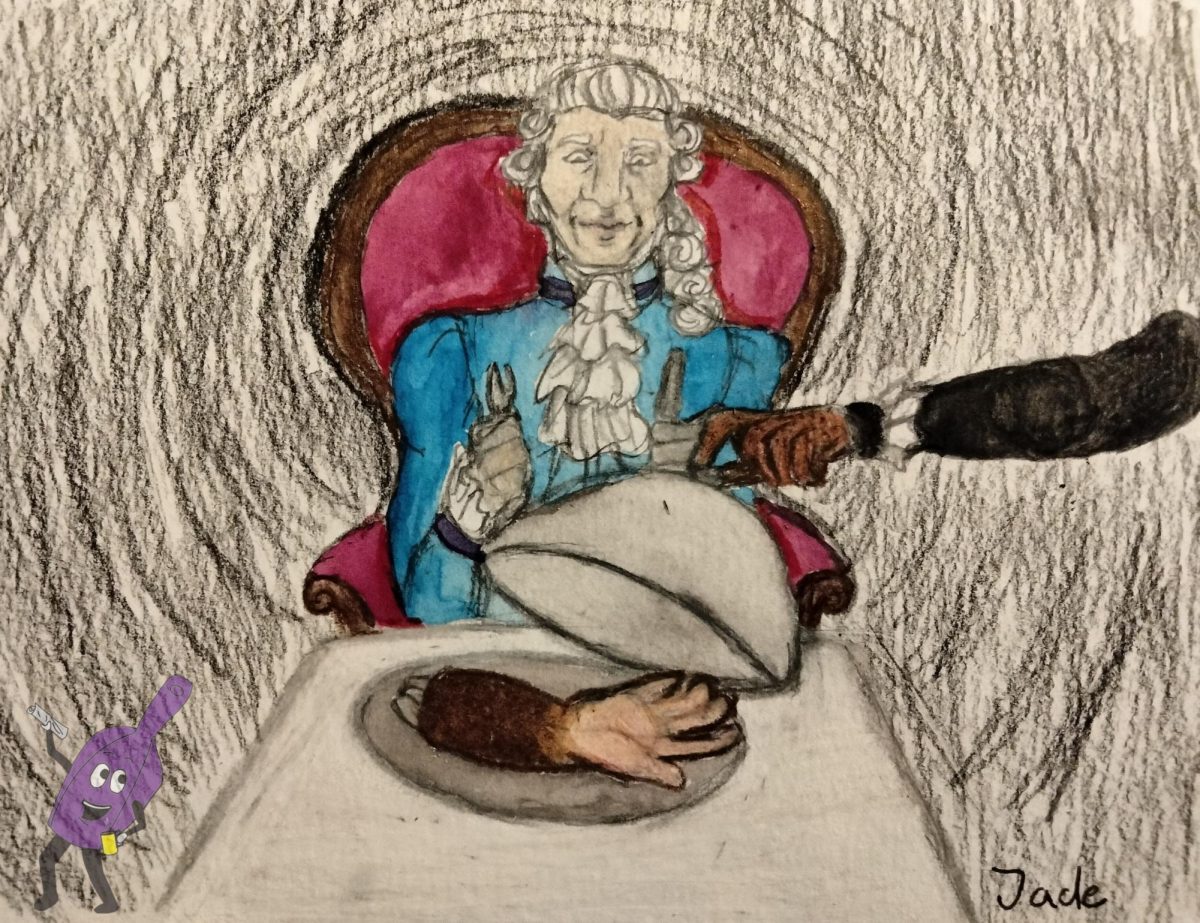Cannibalism is one of humanity’s biggest fears. Films throughout the 20th century reflect this in movies, featuring people being stranded on desert islands, left to cannibals. The act of a man, eating one of his own piques both curiosity and terror in American culture.
The fearsome perception of cannibalism wasn’t always present in Western culture. The complexity of anthropological development, accompanied by colonialism, advancement in medicine, and changes in the culture of morality, has changed how the world perceives the topic.
Historically, cannibalism has been present all throughout the world. Anthropologists have found evidence of human butchering in Europe as early as 800,000 years ago. The practice of cannibalism was widespread in early human history, however, this didn’t stop as civilization as we know it came to be.
European nobility used human body parts as the highest form of medicinal care. As Europeans came to Egypt and the Persian world in the 11th century, the excavation of embalmed corpses, or mummies began. Tombs were raided for treasures but these went beyond gold. The bodies themselves became items of great value.
A substance called “Mumia” was collected from grinding the bodies of mummies. Doctors believed mummia to contain bitumen, an ancient treatment for countless illnesses. Mummia was prescribed to heal ailments such as internal bleeding and headaches.
Mummia was a widely popular substance used for more than medicine. The brown and yellow hues of ground mummies were used in paints. The bodies of Egyptian nobility became a priceless European product for many uses.
This high demand led to a scarcity of authentic mummy medicine, and many began making counterfeit mummia out of the flesh of commoners. Bodies would often be embalmed for the purpose of sale.
Human-sourced cures didn’t stop with the excavation of Egyptian bodies. In England, a common practice was consuming a tincture of ground human skulls. This was known as “king’s drops” as King Charles II perfected it. The skulls were often those of young Irish men, harvested from graves.
Body snatching became a profitable venture throughout Europe. Bones for medicinal properties were only one aspect of the medical use of corpses. Often early medical schools lacked cadavers, so grave robbers provided a path to medical innovation.
Across Europe, from Moscow to Sweden, the warm blood of the executed was thought to be a cure for illness. In medieval England, crowds would surround the gallows, hoping to receive some of this powerful tonic. The blood of the young and healthy was thought to give healthful properties to whoever consumed it, making the fresh blood of the executed a prime source.
As colonization spread, the practice of cannibalism changed. Similarly to other practices such as slavery, racialized systems created new norms. The practice of slavery, much like cannibalism, was once widespread throughout cultures. It was not a practice of ethnic discrimination until colonization gave way to new tactics of oppression and control.
In the 18th and 19th centuries, racial science and eugenics emerged. White supremacy took hold of the world as these “sciences” showed the inferiority of non-anglo ethnicities. The categorization of races as the “most human” to “least human” created structures seen in each system of American colonialism.
Vincent Woodward’s novel The Delectable Negro: Human Consumption and Homoeroticism within U.S. Slave Culture, describes the cannibalistic nature of American slavery. The phenomenon of Southern plantation owners using slaves as an outlet for sexual desires was common. The arousal from the consumption of black men was recorded over many accounts.
The novel accounts the aftermath of Nat Turner’s Rebellion. Turner, after being hanged, was mutilated. John W. Cromwell writes, “His body was given over to the surgeons for dissection. He was skinned to supply such souvenirs as purses, his flesh made into grease, and his bones divided as trophies to be handed down as heirlooms.”
This was not an isolated account of cannibalistic actions toward enslaved people. In 1843, Moses Grandy, in his novel Narrative of the Life of Moses Grandy accounted how black slaves were “seasoned” for torture, having broth poured into their wounds to worsen the pain.
Notably, Frederick Douglass describes the nature of slavery in his novel Narrative of the Life of Frederick Douglass. Douglass describes the stealing of personhood experienced by enslaved people. He speaks of violence beyond slavery alone, and how the nature of slavery was inherently cannibalistic. Douglass writes, “On the one hand, there stood slavery, a stern reality, glaring frightfully upon us,–its robes already crimsoned with the blood of millions, and even now feasting itself greedily upon our own flesh.”
The flesh of the enslaved Africans was commodified in every way possible. The skin of dead slaves was often used to produce human leather to be made into shoes. The hair of enslaved African Americans could be used as a stuffing for furniture. The bodies of African Americans were abused long after death.
The erasure of this complex history is strategic. The story of cannibalism has changed vastly in American culture. Cannibalism has been used as a justification for violence against indigenous people globally. In the Americas, framing indigenous people as cannibalistic and violent allowed for the enslavement, killing, and violent relocation of Native Americans.
This pattern has been observed in other colonized territories, such as Australia, New Zealand, and the Pacific Islands. As European imperial power became globally dominant, the narrative was solidified. Fear of brown people justified violent “defense”.
In more recent years this selective history has become sensationalized into a trope of a “cannibalistic savage”. Horror films such as Cannibal Holocaust, Bone Tomahawk, and Cannibal Ferox, further this stereotype. Racist caricatures of violent cannibal tribes victimizing white people have become a norm in American culture.
The story of cannibalism globally is often seen through a one-dimensional and post-colonial lens. Education is often censored in some areas, but not others. Fears of CRT (critical race theory) and violent content prevent some stories from being told, while allowing for others.
Students learn about the American Revolution, and the rebellions of Native Americans and enslaved Africans, but do not learn the perspective of any but the colonial point of view. The violence of Nat Turner’s rebellion itself is taught, but not the inner view of the aftermath.
The selective teaching of European and American history, and the teaching of colonized peoples as cannibalistic has left misconceptions about the nature of people of ethnically diverse backgrounds. As time progresses, gaps in stories leave room for biases to form. The majority of Americans do not realize what a complex history cannibalism has.





